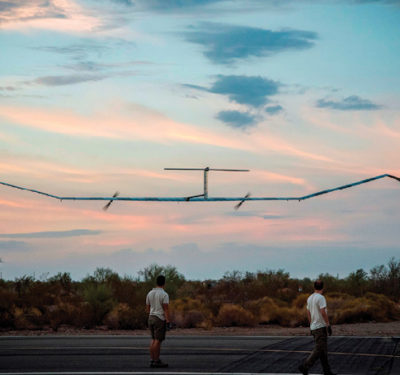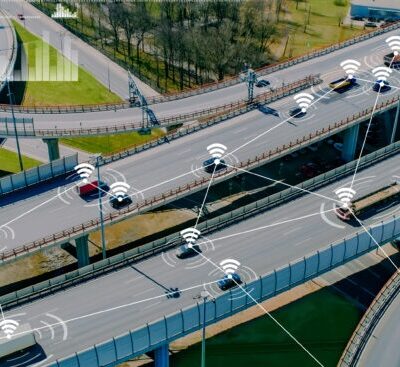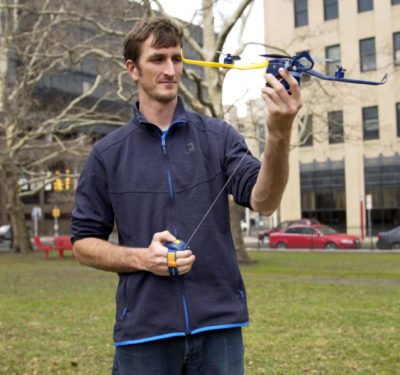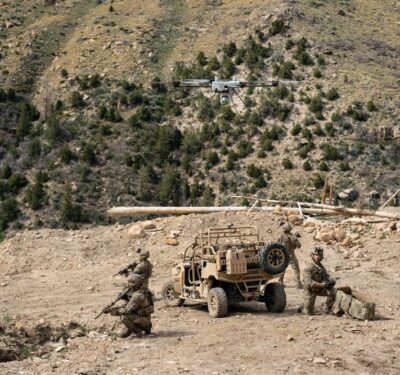The global quest for a greener future is fueling an extraordinary demand for critical minerals. The industry is embracing innovation with drones taking to the skies, ensuring safety scales new heights alongside production.

The global push toward clean and carbon-free electricity has ignited an unprecedented demand for
responsibly sourced minerals. Today, critical minerals play an indispensable role in the production of electric vehicle (EV) batteries, semiconductors, solar panels, defense equipment, health care devices and countless other essential applications. Securing this strategic supply chain has elevated mining to a vital position in both our economy and national security. This has resulted in a forecasted need to substantially increase the responsible production of these resources. As mining operations ramp up, drones have joined the crew to help bolster safety.
Rock Solid Importance
Today, mineral supply chains, crucial to achieve national climate, infrastructure and global competitiveness objectives, remain vulnerable to disruptions. To address these challenges, the U.S. government has taken significant steps to help strengthen and secure these strategic assets.
The Administration’s 2021 Executive Order 14017, Securing America’s Supply Chains, directed various Federal departments and agencies to conduct a comprehensive review of supply chains. Later that year, Congress passed the Bipartisan Infrastructure Law (Public Law 117-58). It mandated the Department of the Interior (DOI) and the U.S. Department of Agriculture (USDA) to collaborate on a report to provide recommendations aimed to expedite the permitting processes for the exploration and development of critical minerals.
As a result, in February 2022, the DOI initiated an Interagency Working Group (IWG) composed of mine permitting and legal experts to thoroughly assess the existing legal and regulatory processes related to hardrock mineral development.
Seventeen months later, in September 2023, the IWG issued its final report, Recommendations to Improve Mining on Public Lands. The report outlines a complex labyrinth of federal and state laws applicable to mining, ranging from environmental compliance and tribal consultation to permitting requirements, that require overhaul. Perhaps more importantly, the report forecasts the need to increase mineral mining, while increasing workplace safety. Why the latter? Because mining carries a set of risks and challenges that workers face daily.
Words Matter: Mining Terms
Source: Ben Douglas, Vale Mining
- Pass/Raise – an excavated vertical column. Passes are usually for material transfer between levels. Raises, generally used for ventilation or emergency travel (escapeways).
- Shaft – one of the main vertical accesses into the mine. Generally has a cage (an elevator for moving people and equipment into the mine) and a skip (large buckets used to transport broken material up and out of the mine).
- Drift – a horizontal excavation used for traveling to and from mining areas. The floor is the bottom much like a house and the back is the ceiling.
- Stope – a block of ORE that is to be drilled and blasted.
- Topsill – the drift on top of the stope to provide access to drilling and blasting.
- Bottomsill – the drift on the bottom to remove the blasted material from the stope. Where the bottomsill opens up into the stope is referred to as the brow.
Slippery Slopes
Mining and quarrying have been recognized as among the riskiest industries to work in, even more so than construction and manufacturing, at least in terms of incident rates. Sadly, every year, a significant number of miners lose their lives to mining accidents. Underground coal mining ranks at the top of the list for such tragedies. Last fiscal year alone, the U.S. Department of Labor’s (DOL) Mine Safety and Health Administration (MSHA) reported that 49 miners perished in tragic accidents, an increase by 10 souls from the prior year.
Every day, mine workers face potential threats from all sides. Falls from heights while working in elevated positions or near steep edges remain at the top of that list. Working near or under unstable ground and rock formation, which can cause rocks or sides to collapse unexpectedly, poses additional risks.
The hazards of working with explosives and heavy machinery, along with lifting heavy materials, elevate the risk of accidents and injuries. Continuous exposure to machinery noise, vibrations, dust, chemicals, and heat can lead to severe long-term health problems or death.
Matt MacKinnon, founder, co-owner of Unmanned Aerial Services Inc. (UAS Inc.), a Sudbury, Ontario-based company, and global leader in providing remote inspection services for indoor industrial and underground mining locations since 2017, noted, “We can often encounter wide temperature ranges of 70 degrees Celsius from one part of the mine to the other.” For example, he explained, at Vale’s Creighton mine, “We could start our day off in the old 3 Shaft area, which is now used as a massive natural ice box used to cool the mine over the summer months, where temperatures can be as low as -30 degrees C. Then later in the day we could find ourselves at the bottom of the mine, down 8,000 feet, in +40 degree C heat with 100% humidity in the air. And that’s not even mentioning that at any point, the ground around you could at any moment start raining down vehicle-sized chunks of solid rock.”
All these conditions make mining a challenging and hazardous profession that demands careful attention to safety. And inspections play an important role in maintaining the level of safety this important, but dangerous, work demands. The law requires inspections in the mining industry, at all levels, to prevent workplace tragedies.
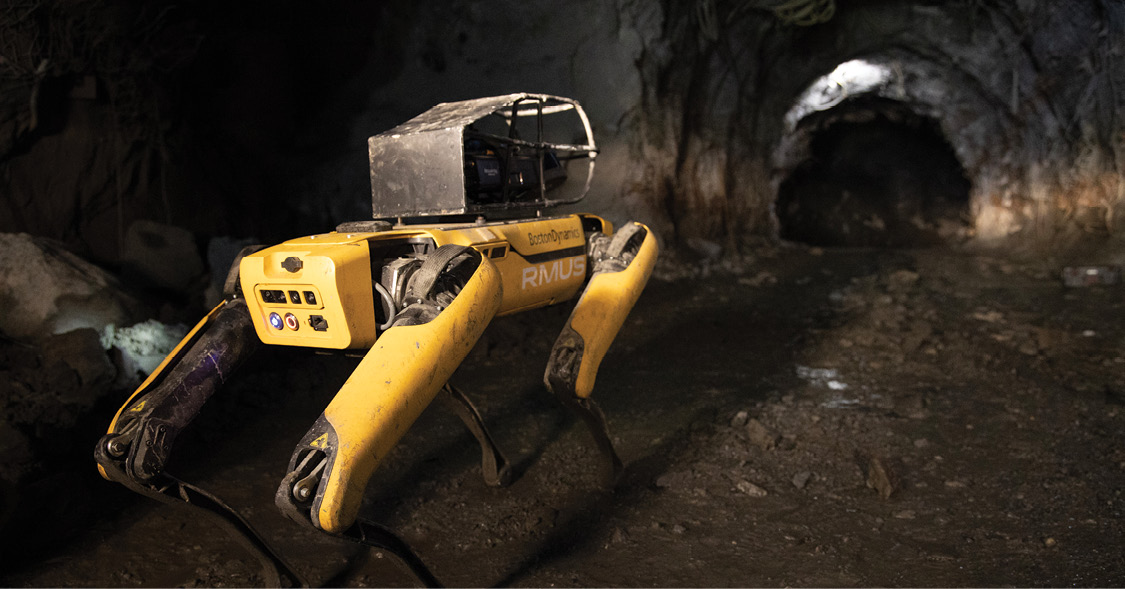
Preventing Collapse
Federal regulations oversee the safety of about 294,000 miners employed across 12,500 metal, nonmetal and coal mines in the U.S. To uphold health and safety standards in mining, the DOL mandates that the MSHA conduct four annual inspections for underground mines and two for surface mines, in addition to any inspections prompted by complaints about hazardous conditions outside that regular schedule.
States also have their own mine inspection requirements. Almost every state (42 to be exact) has its own mining agency. Some have promulgated their own inspection requirements and incorporated drones as an acceptable means of doing so.
For example, Alabama requires “an average of at least one partial inspection per month of each active surface coal mining and reclamation operation under its jurisdiction.” Such partial inspections consist of an on-site or properly documented “aerial review” of compliance with some of the permit conditions and requirements imposed under the State program.
“With a SLAM-equipped drone, the scanner is freely movable in and around the environment and well beyond visual line-of-sight (BVLOS). This enables near shadowless scans of the environment without exposing workers to any hazards.”
– Matt MacKinnon, founder, co-owner, Unmanned Aerial Services Inc. (UAS Inc.)
Non-governmental organizations also provide voluntary inspection guidance that merits compliance. For example, the Initiative for Responsible Mining Assurance (IRMA) issues guidelines that outline the ideal standards for responsible mining on an industrial scale, which independent auditors use in audits and assessments. IRMA recently released draft standards for public consultation, including the Standard for Responsible Mining and Mineral Processing 2.0, which updates its earlier 2018 standard. According to IRMA’s Assessment Manual for Mines (2022), occupational safety remains a key part of the proposed updated audit process.
While these and comparable standards are not legally mandatory, they serve as a consensus within the industry, effectively establishing a baseline level of expected responsibility. Failing to meet these standards could potentially result in liability in the case of an incident. This provides companies with a strong incentive to conduct thorough inspections.
As a result, some mining enterprises have embraced drones as a component of their inspection strategies. Drones offer an efficient, effective and economical—and safe—alternative to manual inspections.
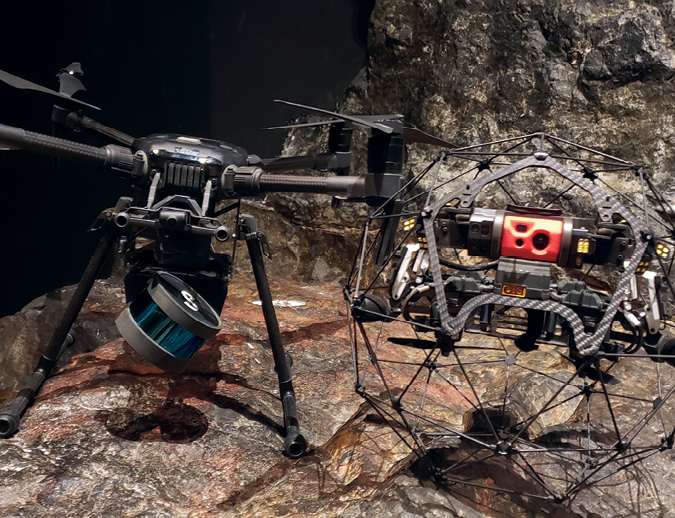
Digging Deep
Traditional manual mine inspections are laborious, monotonous, costly and require ground teams to put themselves at risk of harm.
Ben Douglas, P.Eng, technical services supervisor at the South Mine in Sudbury, Ontario, Canada for Vale, a global mining company, said typical scanning methods require workers to take static measurements in an accessible area with line-of-sight of a 3-D scanning Cavity Monitoring System (CMS) instrument. For stope scans (open void in the rock mass where the value material has been blasted out), the setup involves a boom-style scanner to shoot points in the stope from a single static location. After orienting the boom in space relative to existing coordinate systems, the worker has to wait for the scan to be completed. Scanning a drift (a horizontal excavation used to travel to and from mining areas) requires setting up a static station using an established coordinate system to take shots of the walls, floors and backs. The worker then takes all of this data to a computer for later processing. To run a simple scan, both processes, on average, take a minimum of two people anywhere between one to four hours to complete. Setup alone can take at least 30 minutes.
Worse yet, these methods require workers to get in close to physically deploy these scanning systems, which exposes them to hazards. Douglas explained that traditional scanning methods require his team to work around open holes, dealing with movement restrictions and wearing safety harnesses and gear. Or, they must work near open brows, using long booms to reach into the stopes safely from afar.
After all of this, the data gleaned can sometimes be subpar. Traditional systems can cause significant shadows and occlusions in the scan data.
In contrast, with modern drone technology, workers can stay well back from hazards, obtain better coverage quicker and at less cost.
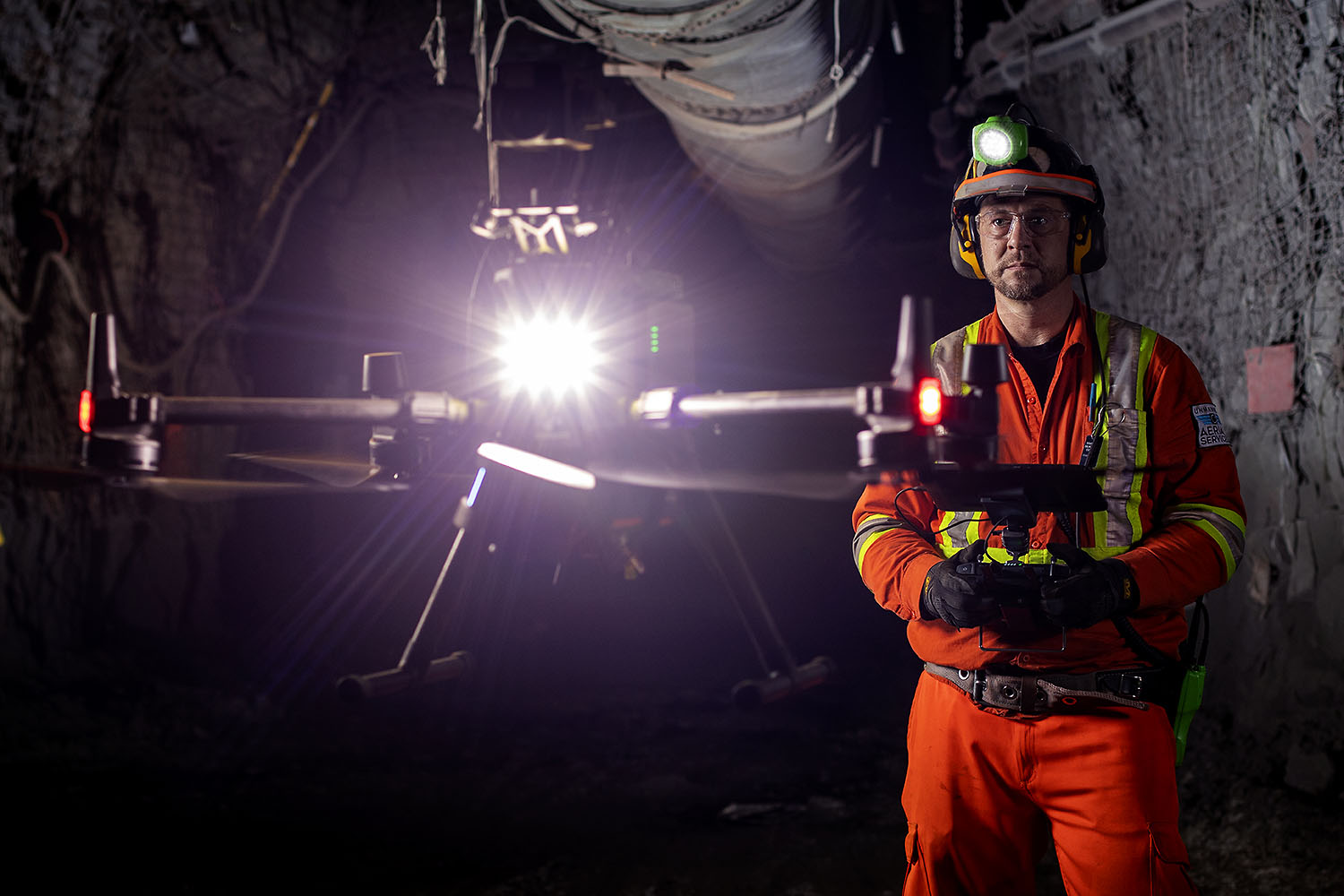
Hi Ho! Hi Ho! Off to Work Drones Go!
For mining inspections, there is no one-size-fits all solution. Fortunately, for service providers and customers, manufacturers have offered a range of solutions that can provide a holistic approach to help solve specific problems. Manufacturers of mining drones include Exyn Technologies, Emesent, Flyability, AutoMap and Carlson, just to name a few.
These drones all integrate modern simultaneous localization and mapping (SLAM) based scanning technology. SLAM, a LiDAR-based system, uses a laser sensor to generate a 3D map of its environment while simultaneously localizing the vehicle in that map. This is key for navigation and accuracy in mines, which are GPS-denied environments.
MacKinnon noted, “With a SLAM-equipped drone, the scanner is freely movable in and around the environment and well beyond visual line-of-sight (BVLOS). This enables near shadowless scans of the environment without exposing workers to any hazards.”
With modern SLAM-based scanners, a single technician can scan three or four areas in the same amount of time it would take for a single scan in a traditional survey. That’s good because time is money.
While every job is different and often priced out based on risk and required equipment, MacKinnon estimates his mine customers typically get a 100 to 10,000 times return in value and cost savings due to the high caliber data his team collects for them. “Having access to drone technology enables mine operators to make decisions based on the actual conditions that can be obtained in just one 10-minute flight,” he said.
Although MacKinnon’s company has numerous accomplishments and world-firsts under its belt, he points to a flight his team accomplished for Alamos Gold at their Young-Davidson site as an example of significant value-add. “Essentially, this mine was reopened after years of being dormant. Long story short, the new mine broke into some old workings that the mine had no record of and they called on UAS Inc to explore the extent of the workings to see where they went.” Because the area dated back to the 1930s, much of the timber work supporting the open holes had collapsed. This made safe access nearly impossible without significant costs. “We flew the workings using the Flyability Elios 3. In less than 10 minutes, we were able to save the mine months of rehabilitation and hundreds of thousands of dollars in resources.
Lindsay Moreau-Verlaan, M.A.Sc., P.Eng. (ON), principal geomechanics consultant for RockEng Inc. agrees with MacKinnon on the value-add of drones in mining. “My favorite underground mining drone application is as a data collection tool for inspections specific to areas that cannot be safely accessed by people,” she said.
Moreau-Verlaan continued, “Benefiting from a ‘non-person’ entry application, LiDAR-carrying drones can be used to measure large underground blast openings, inspect excavations that are destabilizing and assess old mine workings that cannot be safely traveled by workers or personnel, and in record time.”
“My favorite underground mining drone application is as a data collection tool for inspections specific to areas that cannot be safely accessed by people.”
– Lindsay Moreau-Verlaan, M.A.Sc., P.Eng. (ON),
principal geomechanics consultant, RockEng Inc.
Raffi Jabrayan, vice president of business development and commercial sales at Exyn Technologies piled on. He said that his company’s autonomous mapping system, the ExynAero, allows one person to conduct a mine scan in just two minutes. “The return on investment (ROI) is clear,” he noted, “because the drone pays for itself in just two months.”
Jabrayan shared a similar story to MacKinnon’s. “We were called out to a mine collapse in Africa a couple of years ago where multiple levels of the mine had collapsed. Clearly, this was not safe for human entry. Within just a few minutes, our drones showed how many levels had collapsed,” he explained.
Drones have saved Douglas’ mining company millions of dollars on a regular basis. More importantly, he said, the safety proposition of drones in mining is priceless. “There’s no number to put on the loss of a miner,” he said.
“I like the fact that we get miners home safely every day. It’s a big reason why I do this job,” Jabrayan added.
Striking it Rich
It’s clear drones can provide a treasure trove of value for mine inspections, not the least of which is saving lives. The value proposition of drone applications in mining will only get better as technology continues to improve.
“Just because something wasn’t possible one day, doesn’t mean it won’t be possible tomorrow,” MacKinnon said. “As technology advances, I hope that our customers continue to come to us with their problems. That enables service providers like UAS to push our manufacturing partners to keep innovating and pushing the boundaries of what is possible.”
For Douglas, the benefits of the new technology’s safety and productivity are apparent. Trialing that technology and providing meaningful input will help advance the future. His message to the mining community: “Don’t be afraid to try something new, ask questions if you’re unsure and provide feedback. Especially if it may affect someone’s safety.”
As our country leans more deeply into mining to assure the sufficiency of vital mineral supply chains, drones will undoubtedly continue to be an important part of the crew.


